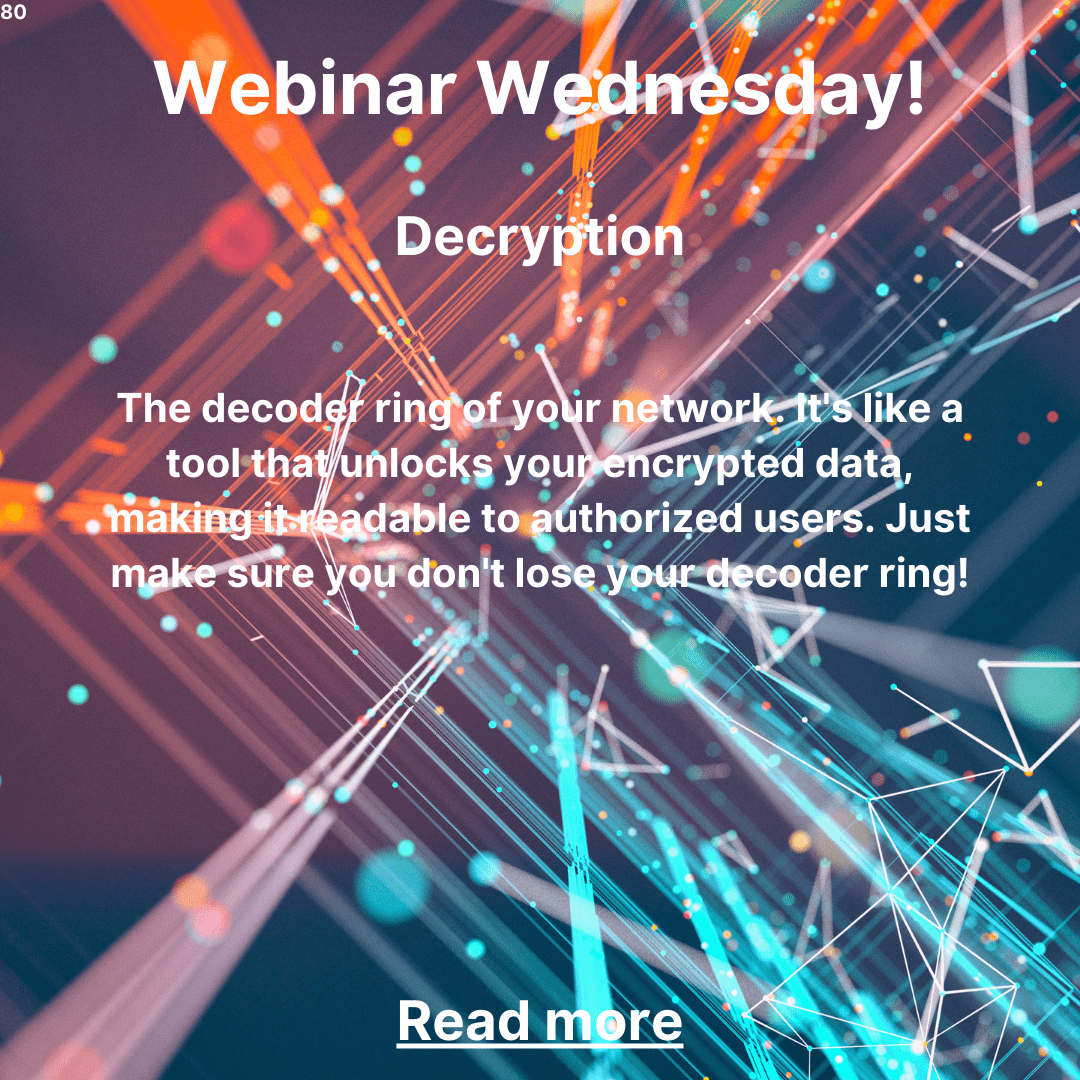Welcome to another exciting Webinar Wednesday! Today, we’re diving into the intriguing world of decryption, where we unravel the secrets of securing your data. Get ready for an informative and entertaining session as we decode the process of decryption using analogies, emojis, and our signature funny tone. So, grab your virtual seat and let’s begin!
Introduction to Decryption: Unlocking the Secrets
Imagine you receive a mysterious letter sealed with a complex lock. To read its contents, you need the key that matches the lock. Decryption is like finding that matching key and unlocking the hidden message. It’s a process that converts encrypted data back into its original form, making it readable and usable once again.
The Lock and Key Analogy: A Match Made in Security Heaven
Decryption can be understood through a lock and key analogy. Just as a lock secures valuable items, encryption protects your data by transforming it into an unreadable format. Decryption, on the other hand, acts as the key that opens the lock, restoring your data to its original form.
The Decryption Process: Unraveling the Mystery
Let’s take a closer look at the steps involved in the decryption process:
Step 1: Obtaining the Key
To start the decryption process, you need the correct key that matches the encryption algorithm used. It’s like having the right key to unlock a specific lock. Without the key, decoding the encrypted data becomes nearly impossible.
Step 2: Unlocking the Data
Once you have the key, it’s time to unlock the encrypted data. Think of it as turning the key in the lock and hearing that satisfying click. The decryption algorithm uses the key to reverse the encryption process, transforming the encrypted data back into its original, readable form.
Step 3: Accessing the Unlocked Data
Congratulations! You’ve successfully decrypted the data, and now it’s accessible for you to use and understand. It’s like opening a treasure chest and discovering the valuable contents inside. You can now utilize the data for analysis, processing, or any other purpose.
Decryption in Action: Real-World Scenarios
Decryption plays a crucial role in various real-world scenarios, from securing online transactions to protecting sensitive information. Let’s explore a couple of examples:
Online Transactions
When you make a purchase online, your payment information is encrypted to ensure it remains confidential. When the transaction reaches its destination, the recipient uses decryption to access your payment details securely. It’s like sending a secret message that only the intended recipient can decode.
Secure Communication
Decryption is also vital in secure communication channels, such as messaging apps and email. Your message gets encrypted before being sent and can only be decrypted by the intended recipient with the matching key. It’s like sealing your message in an envelope that only the recipient can open.
The Role of Encryption and Decryption: A Perfect Duo
Encryption and decryption work hand in hand to provide robust data security. Encryption protects your data by converting it into an unreadable format, while decryption allows authorized parties to access and utilize the data. They are like partners in crime-fighting, ensuring your sensitive information remains safe from prying eyes.
The Challenges of Decryption: Not All Locks Are Easy to Unlock
Decryption is not without its challenges. Just as some locks are more challenging to pick, certain encryption algorithms are more complex to decrypt. Factors like the key length, encryption strength, and computational power required can affect the decryption process. But fear not, as technology and cryptographic advancements continue to evolve, making decryption more efficient and accessible.
Best Practices for Secure Decryption
To make the most of decryption and ensure data security, consider these best practices:
- Key Management: Safely store and manage your decryption keys to prevent unauthorized access.
- Strong Encryption: Use robust encryption algorithms to maximize the security of your data.
- Regular Updates: Keep your decryption tools and algorithms up to date to stay ahead of emerging threats.
- Layered Security: Implement multiple layers of security measures, including encryption, firewalls, and access controls, for comprehensive data protection.
Conclusion: Decryption Unlocked!
Congratulations, you’ve successfully decoded the process of decryption! From understanding the lock and key analogy to exploring its real-world applications, you now have a solid grasp of how decryption secures your data. Remember, encryption and decryption go hand in hand to create a robust security framework. So, keep those decryption keys safe, stay updated with the latest cryptographic advancements, and ensure your data remains secure.
Thank you for joining us on this Webinar Wednesday! We hope you enjoyed our fun-filled journey through the world of decryption. Stay tuned for more exciting webinars where we unravel the mysteries of technology and security, one topic at a time.
Keep calm and decrypt on! 🗝️🔓


7 responses to “Webinar Wednesday: Decoding Decryption – Understanding the Process of Securing Data”
Noodlemagazine very informative articles or reviews at this time.
Thank you for your sharing. I am worried that I lack creative ideas. It is your article that makes me full of hope. Thank you. But, I have a question, can you help me? https://www.binance.com/es-MX/register?ref=GJY4VW8W
Yo, just checked out hm88club and it’s pretty decent! Had a good time playing some slots. Not bad at all! Check it out hm88club
Heard some good things about cm88okvip. Gotta check it out myself. Maybe I’ll get lucky cm88okvip.
789fgame has a good vibe. Lots of different games to kill time. What are you waiting for? Dive is now at: 789fgame
Just downloaded the bit789app and so far, so good. Easy to navigate, and the games are running smooth. Gives you a fresh experience, worth exploring. Check it out if you want a mobile alternative! bit789app
I don’t think the title of your article matches the content lol. Just kidding, mainly because I had some doubts after reading the article.